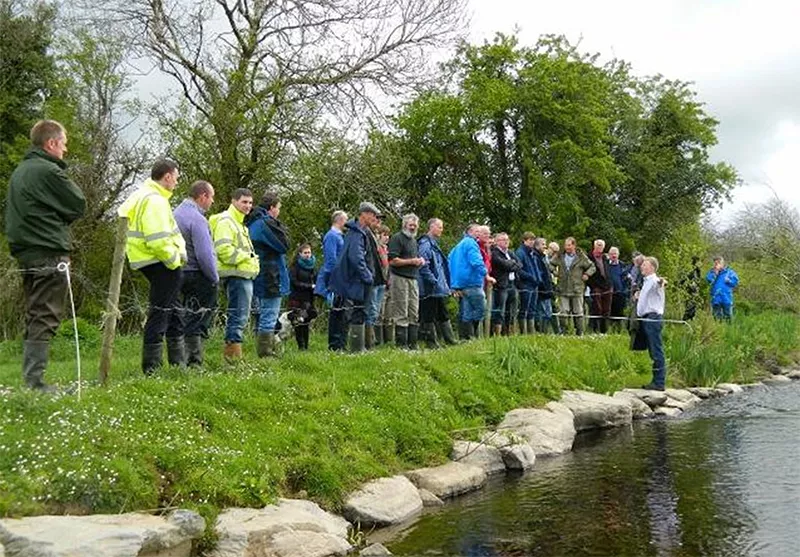LEADER action acts as catalyst for new funding for water biodiversity projects in Ireland
Irish LEADER support for the Water Biodiversity Training Programme for the Duhallow Communities project acted as a catalyst in helping local authorities design popular and productive environmental actions attracting larger sources of funding.

© IDR Dhallow
LEADER is good at building social capacity in rural community organisations that can be directed to develop and maintain essential environmental resources like water. An excellent example of this is Ireland’s Water Biodiversity Training Programme for Duhallow Communities, which acted as a catalyst in helping local authorities design popular and productive environmental actions attracting larger sources of funding.
Being part of the Common Agricultural Policy (CAP), LEADER is fully capable of supporting the European Green Deal and Local Action Groups (LAGs) in providing a range of environmental improvement interventions through their cooperation activities. LEADER’s well-established collective approaches provide advantages from a bottom-up ability to foster dialogue between multiple actors, often with different perspectives. Results allow important environmental objectives to be debated and agreed in inclusive manners. By doing so, synergies and trade-offs between different objectives can be identified and action agreed to maximise those synergies and minimise the trade-offs for local authorities.
EU water policy objectives have been successfully integrated into the CAP Strategic Plans (CSPs). LEADER supports the development of rural enterprises and maximises the opportunities presented by the green economy. By making funds available to local communities, EU Member States will contribute to the achievement of the EU’s water policy objectives, through local initiatives aligned with the EU Water Framework Directive (WFD). The European Commission’s DG Agriculture (DG AGRI) CSP at a glance factsheet draws attention to opportunities through CAP interventions including LEADER to reinforce water resilience, increase land’s water retention capacity and reduce water pollution risks.
A review of LEADER good practices in water fields demonstrates the potential of LAGs to support such WFD and CAP goals in producing positive project impacts stretching across water savings, drinking water, biodiversity, drainage, irrigation, safety and more. Benefits from these LAG-funded initiatives include various forms of outcomes facilitating new social and natural capital supporting the long-term resilience of rural Europe.
Irish LEADER project good practice examples include community-based training boosting water biodiversity awareness and collective action in Duhallow.
Communities from this part of Ireland had lacked local-level knowledge about conserving water biodiversity. As a result of this, they were not in an optimal position to participate in WFD activity. To address this challenge, the area’s LEADER group worked with local authority colleagues to design a training programme in water biodiversity that helped communities to help themselves engage more in protecting local water biodiversity.
Local communities were supported to assess their areas from an environmental perspective and inform future WFD projects that could be undertaken by the communities themselves. Outcomes built social capital, lessening the long-term need for the expense of external expertise.
Well-known community and industry bodies were used to survey the local population and determine the level of interest in the training project before a series of thematic workshops on habitat mapping and habitat conservation were organised. These were advertised through social media and local newsletters, encouraging community capacity building in skillsets such as understanding your local water body and water quality and impacts in addition to identifying new project possibilities.
LEADER’s WFD training acted as a catalyst for future biodiversity-related activity in local communities. For each of the participating 38 communities, a habitat conservation and biodiversity development plan was created. These identified actions and project proposals that could be financed by the region’s Community Water Development Fund or other funding applications to further expand and extend the LAG project’s successful legacy.